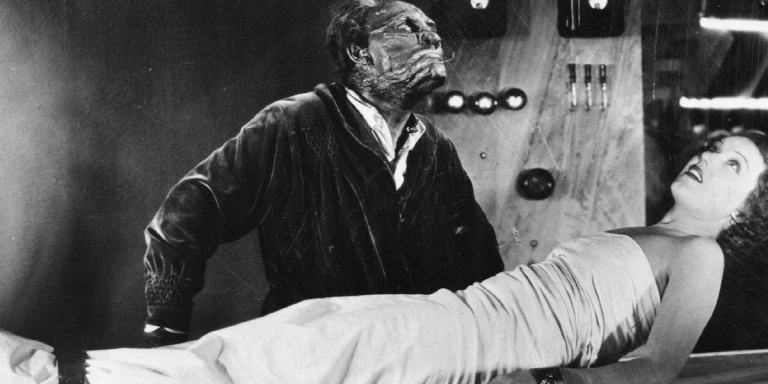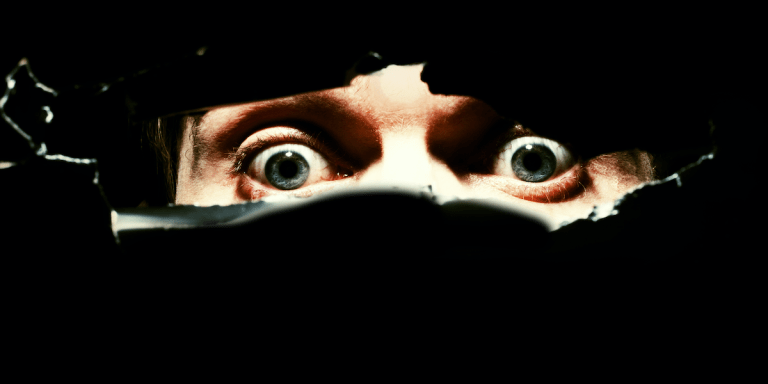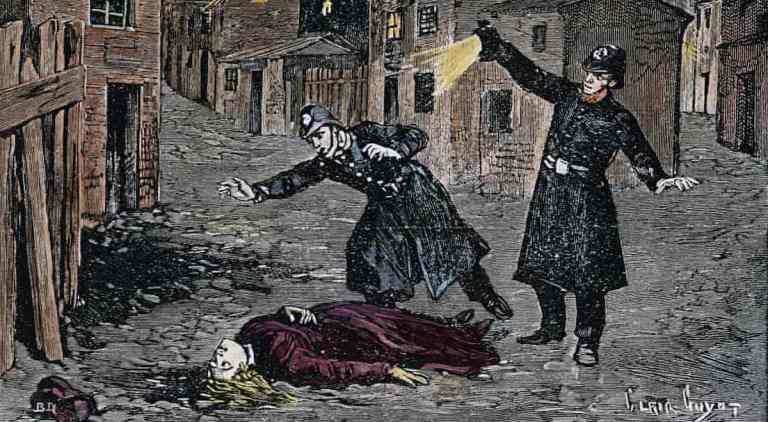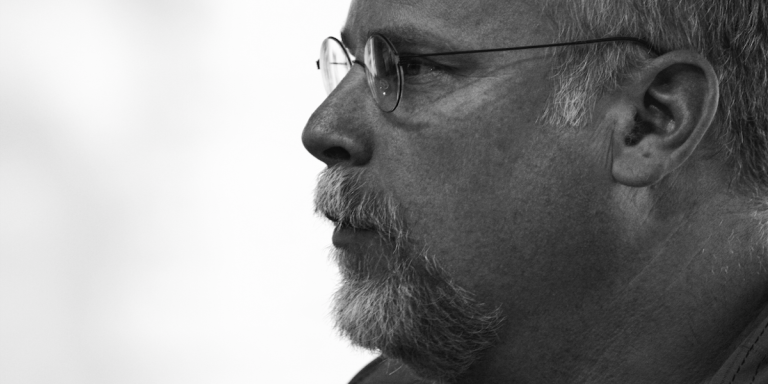A Horror Classic To Remember: The Shining
FRIGHT FAVORITES: THE SHINING
If a haunted hotel ever takes a “shine” to you, it may be time to check out.
Excerpted from FRIGHT FAVORITES: 31 Movies to Haunt Your Halloween and Beyond by David J. Skal. Copyright © 2020. Available from Running Press, an imprint of Hachette Book Group, Inc.
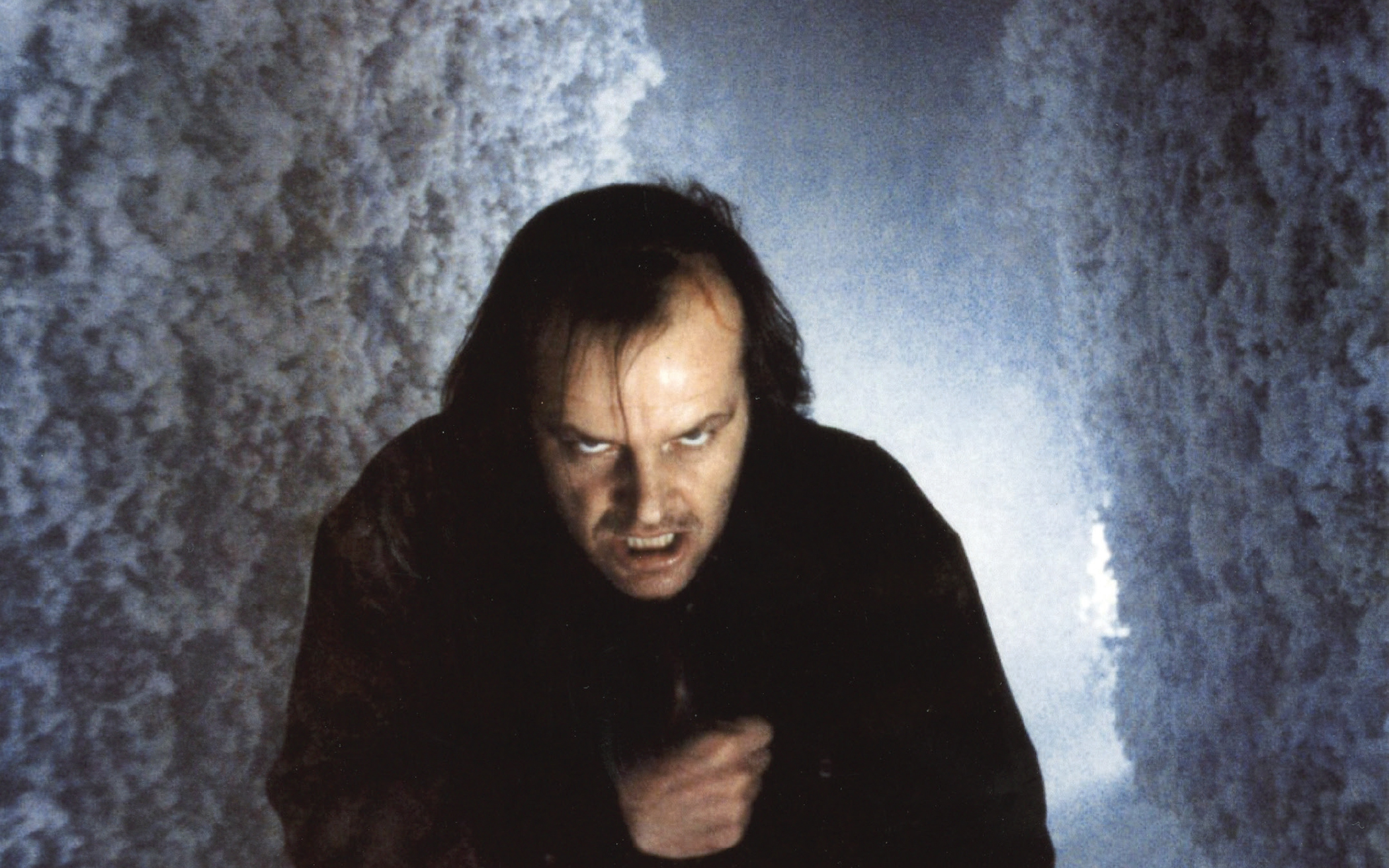
Jack Torrance (Jack Nicholson), a recovering alcoholic and aspiring writer in Boulder, Colorado, accepts the position of winter caretaker at the landmark Overlook Hotel in the Rocky Mountains, believing the solitude will aid his writing and help repair his alcohol-damaged relationship with his wife, Wendy (Shelley Duvall), and son, Danny (Danny Lloyd). The manager tells him about the Overlook’s history. The hotel, built on the site of a Native American burial ground, is shuttered and completely isolated during the snowed-in months, and a previous caretaker, named Charles Grady, lost his mind to cabin fever before killing his family and committing suicide on the premises.
Danny, who has an imaginary friend named Tony, has a frightening premonition about the hotel before the family moves in. They arrive on the final day of the tourist season, and Danny is startled when the head chef, Dick Hallorann (Scatman Crothers), offers him ice cream telepathically. He then explains that he, like his grandmother, has an extrasensory gift he calls “the shining.” Clearly, Danny shares it as well. Before leaving to spend the winter in Florida, Hallorann tells Danny that the building has some dark memories and warns him to stay away from room 237.
Within the first month of weather-imposed exile, Jack’s ability to write doesn’t improve. Danny has terrifying visions, including of a pair of twin girls who stare at him from the end of a corridor. Heavy snow knocks out the phone. Jack’s mood becomes dark, his behavior bizarre, menacing, and violent. He tells Wendy that he has dreamed of killing her and Danny. When Danny, who has been drawn irresistibly to room 237, returns with bruises, Wendy believes that Jack has been physically abusing their son. Jack withdraws into a surreal perception of the hotel in which he meets a spectral bartender in the ballroom who serves him alcohol and encourages him to follow his resentments to their inevitable, murderous conclusion.
Based on the best-selling 1977 novel by Stephen King, Stanley Kubrick’s version of The Shining has received more critical scrutiny and acclaim than any other horror film, but it has also been regarded as more of a personal statement by the filmmaker than a faithful adaptation of the novel. Many fans prefer the 1997 television miniseries, directed by Mick Garris and starring Steven Weber and Rebecca De Mornay, as a more definitive reflection of the novel. Kubrick’s detractors point out that Jack Nicholson seems unhinged from the very beginning of the film, quite unlike his portrayal in the novel and miniseries, which depict a gradual descent into the horror of alcoholic relapse. King had written the book during his own struggle with alcoholic dependence.
Wendy, as Shelley Duvall played her under Kubrick’s direction, emerged as a weak-willed doormat rather than a full participant in the troubled marriage, as she was written by King and played by De Mornay in the miniseries. To put it mildly, Duvall and Kubrick did not work well together, and her character almost takes the shape of the director’s low opinion of the actress. As Stephen King put it, Wendy was “basically just there to scream and be stupid, and that’s not the woman that I wrote about.” Overall, King considered the film to be “a great big beautiful Cadillac with no motor inside.” The most fervent adherents of Kubrick find a multiplicity of near-subliminal clues to the director’s more cryptic intentions and messages. The most comprehensive guide to this line of critical thinking, among others, can be found in Rodney Ascher’s fascinating, if controversial, 2012 documentary, Room 237.
Kubrick, a legendary perfectionist, spent a full year shooting the film at EMI Elstree Studios, outside London, the same production facility where the great Hammer horror classics were created. The actors became exhausted with almost daily script rewrites and endless retakes. The scene in which Wendy swings a baseball bat at Jack needed 127 takes before Kubrick was satisfied. Nicholson (who won the role after King objected to the potential casting of Robert De Niro, Robin Williams, or Harrison Ford) reportedly stopped memorizing his lines and did quick studies of the rewritten material just before shooting. The film cemented Nicholson’s edgy star power, but King felt that even he had been miscast. Among the actors King would have preferred were Jon Voight or Michael Moriarty.
If you enjoyed The Shining (1980), you might also like:
CARRIE
UNITED ARTISTS, 1976
Stephen King’s first novel is an enduring best seller, and with good reason. No novel before Carrie had ever described the unvarnished emotional brutality of American high school: the cruel rituals of initiation, exclusion, and scapegoating were instantly recognizable to millions. Imagine a grim travesty of “Cinderella” recast as a revenge melodrama, with a high school prom standing in for the prince’s ball and Cinderella showing up with a terrorist’s incendiary device. Sissy Spacek made her first screen splash being soaked with pig’s blood, earning a Best Actress Oscar nomination in the title role of the school’s designated odd girl out. Piper Laurie, who received a Best Supporting Actress Oscar nomination, almost steals the show as Carrie’s religious-fanatic mother seeking, and finally achieving, ecstatic martyrdom. The final twist scene, which has been endlessly imitated but never done so well as here, still has the power to shock. If at all possible, watch it with somebody who’s never seen it before, and enjoy the show.
Order Now
Turner Classic Movies presents a collection of monster greats, modern and classic horror, and family-friendly cinematic treats that capture the spirit of Halloween, complete with reviews, behind-the-scenes stories, and iconic images.
Fright Favorites spotlights 31 essential Halloween-time films, their associated sequels and remakes, and recommendations to expand your seasonal repertoire based on your favorites. Featured titles include Nosferatu (1922), Dracula (1931), Cat People (1942), Them (1953), House on Haunted Hill (1959), Black Sunday (1960), Rosemary’s Baby (1968), Young Frankenstein (1976), Beetlejuice (1988), Get Out (2017), and many more.
By clicking 'Sign Up,' I acknowledge that I have read and agree to Hachette Book Group’s Privacy Policy and Terms of Use
